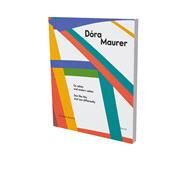Dóra Maurer: See like this and see differently Cat. Kunsthalle Bielefeld
, by László, Zsuzsa; Mund, Henrike; Maurer, Dóra; Végh, Christina- ISBN: 9783864423932 | 3864423937
- Cover: Paperback
- Copyright: 10/3/2023
Dó ra Maurer (born 1937, lives in Budapest) is considered a prominent figure on the Hungarian neo-avant-garde scene. She is one of the artists who have been taking progressive paths outside of Hungary’ s official state cultural policies since the 1960s. Her work in the mediums of print making, photographs, film, performance art, and painting features a conceptual approach. Major aspects are perception, movement, displacement, and transformation. In the early years of West-Germany, abstract art was introduced as a political new beginning in that it represented the so-called open society. Accordingly, numerous collections in German museums are oriented toward this, including the one at the Kunsthalle Bielefeld, whose building was designed by the US-American architect Philip Johnson. While abstract art in the West was considered “ free of ideologies” and instrumentalized as such, abstraction in countries such as Hungary, which was part of the Eastern bloc at the time, certainly had an “ oppositional” connotation. Due to both the non-representational nature of her works as well as her contacts and travels in the West prior to 1989 (permitted thanks to her Hungarian-Austrian dual citizenship), Maurer occupies a special position within the Hungarian art world, which in those days was mainly dominated by Socialist Realism. In her experiments in photography and film in the 1970s, as well as in her abstract, geometric works based on a process of displacement, there are obvious parallels to Western European and US-American post-war art. In fact, however, her oeuvre is inconceivable without her experience of life under the official Hungarian system during the socialist period.







